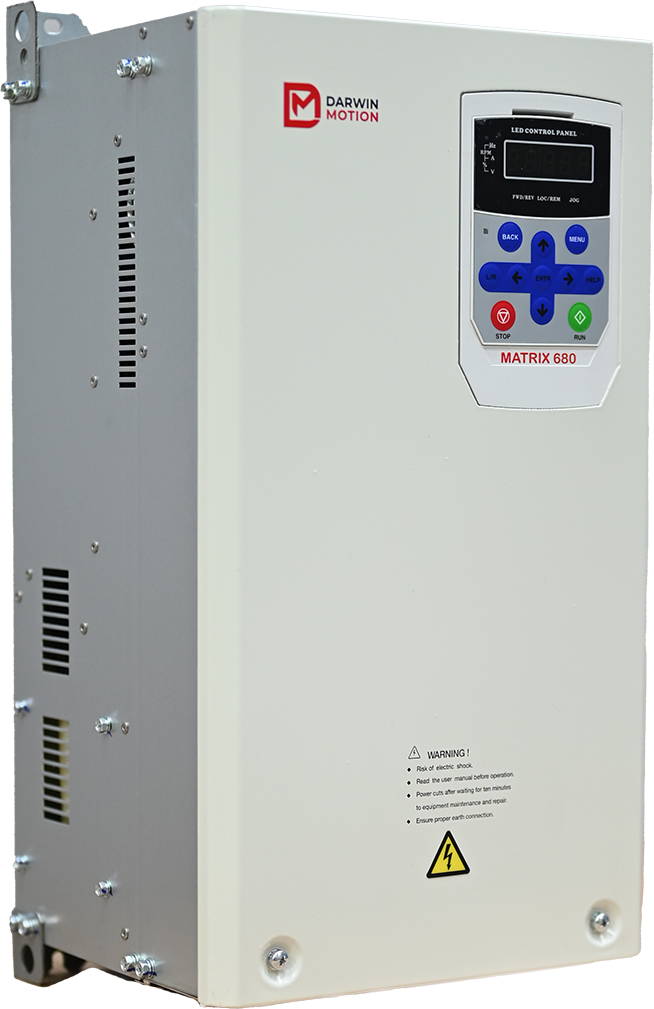Posted on 11th Mar 2025

In the world of industrial automation and motor control, Variable Frequency Drives (VFDs) are essential for regulating the speed and torque of electric motors. Among the advanced technologies used in modern VFDs, Pulse Width Modulation (PWM) stands out as a key method for controlling motor performance efficiently and precisely. When it comes to VFDs like the Darwin Motion VFD, understanding how PWM works is crucial for maximizing their benefits. In this article, we will explore the role of PWM in Darwin Motion VFDs and how it enhances motor control.
Pulse Width Modulation (PWM) is a technique used to control the amount of power delivered to an electrical load by varying the width of the pulses in a signal. Instead of using a continuous, unchanging signal to power a motor, PWM sends a series of voltage pulses at a fixed frequency. The width of these pulses (the duty cycle) determines the average voltage and, consequently, the power supplied to the motor.
In simple terms, PWM adjusts the amount of energy delivered to the motor by turning the power on and off at a high frequency. The motor's response to these pulses is smooth and controlled, which allows for precise speed and torque regulation without significant energy losses.
The Darwin Motion VFD uses PWM to control the AC motor's speed, torque, and overall performance. Here’s how PWM works in a Darwin Motion VFD:
The first step in a VFD’s operation is rectification, where the incoming AC power is converted into DC power using a rectifier circuit. This DC power is then smoothed and stored in a capacitor bank to provide a stable DC voltage source. The DC link is the intermediate stage where the energy is stored before being converted back to AC for the motor.
In the inverter stage, the DC voltage is converted back to an AC waveform using high-speed switching devices, typically Insulated Gate Bipolar Transistors (IGBTs). The PWM control algorithm determines how often the switches turn on and off, and for how long, based on the desired output frequency and voltage.
The PWM technique regulates both the frequency (which controls the motor speed) and the voltage (which controls the torque). By adjusting the frequency, the VFD sets the speed at which the motor should run, while controlling the voltage ensures the motor operates efficiently under varying load conditions.
The key to PWM is the modulating of the pulse width. A longer pulse width increases the average voltage delivered to the motor, while a shorter pulse width decreases it. This modulation allows for smooth motor operation with precise control over both speed and torque. In Darwin Motion high performance drive, the pulse width is adjusted continuously, depending on the input commands and load conditions, to maintain the desired motor performance.
The PWM process involves high-frequency switching (typically in the range of 10 kHz to 20 kHz), meaning that the switches turn on and off at a rate that is too fast for the human eye to detect. This high-frequency operation ensures that the motor receives a continuous, smooth AC waveform, minimizing motor noise and vibration.
After the inverter stage, the signal produced by PWM is not a perfect sinusoidal waveform. It is a series of sharp pulses, but thanks to the filtering process—typically done with inductors or capacitors—these pulses are smoothed out into a near-sinusoidal waveform that the motor can use efficiently.
The primary benefit of using PWM is its ability to deliver power to the motor efficiently. By controlling the duty cycle of the pulses, the Darwin Motion VFD can precisely control the motor's speed and torque with minimal energy losses. Unlike older methods, such as resistive speed control, PWM delivers power to the motor in a way that minimizes heat generation and energy waste.
PWM allows for smooth, continuous motor operation. The fast switching of the inverter ensures that the motor runs without significant fluctuations in speed or torque, providing precise and consistent performance, even under varying load conditions.
Because PWM produces a high-frequency switching signal, it helps reduce harmonics—unwanted frequencies that can distort the motor’s performance. By filtering out these high-frequency components, Darwin Motion VFDs ensure that the power delivered to the motor is cleaner, which helps reduce motor heating, vibration, and wear.
One of the standout advantages of PWM control in VFDs is the ability to provide precise speed regulation across a wide range of operating conditions. Operators can easily adjust the motor’s speed and torque according to specific requirements, leading to better performance and versatility in industrial applications.
Unlike traditional control methods, where power losses are dissipated as heat, PWM controls the motor's power delivery efficiently, reducing energy wastage and minimizing the amount of heat generated by the system. This helps improve the overall lifespan of both the motor and the VFD.
The high-frequency switching involved in PWM results in a smoother operation, which translates into reduced motor noise. The quieter performance is beneficial in environments where noise levels must be kept low, such as in medical facilities, offices, or high-end manufacturing settings.
The combination of PWM and Darwin Motion VFDs makes them ideal for various industrial applications, including:
HVAC Systems: For precise control of fan and pump speeds.
Conveyor Systems: Ensuring smooth, consistent motion in material handling.
Pumps and Compressors: Optimizing energy consumption while maintaining the required pressure and flow.
Machine Tools: Offering precise control over motor speeds in precision manufacturing.
Pulse Width Modulation (PWM) is a fundamental technology that enhances the performance and efficiency of Darwin Motion VFDs. By controlling the duty cycle of the pulses sent to the motor, PWM allows for smooth, efficient, and precise motor operation across a wide range of conditions. The result is lower energy consumption, reduced wear and tear, quieter performance, and better overall system reliability. For industries seeking to optimize their motor control systems, understanding and utilizing PWM technology in VFDs like the Darwin Motion VFD is a smart, effective choice.